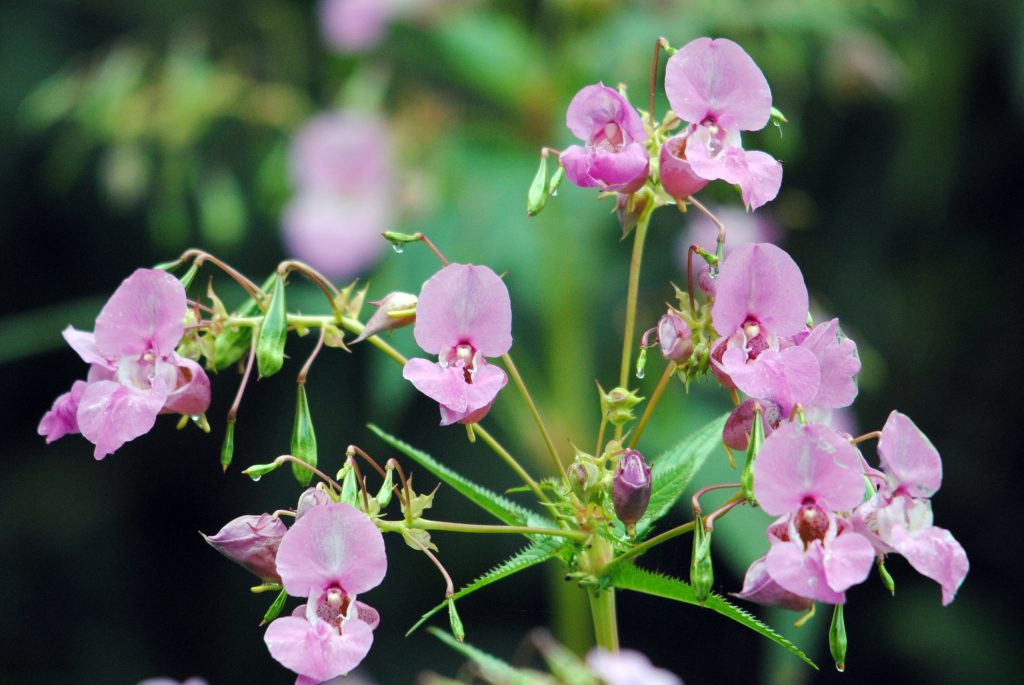An important part of our work on the River Cole is to tackle the invasive plant species growing along the river banks, particularly Himalayan Balsam.

Himalayan balsam (Impatiens glandulifera) may look quite attractive initially, but it is in fact a non-native invasive species (NNIS) causing a major weed problem, especially affecting rivers, floodplains, connected ditches and waterbodies.
The plant disperses its seeds very widely and very efficiently, with each plant producing up to 2500 seeds that are released and catapulted to distances of up to seven metres! The seeds are then widely spread through rivers and floodings, meaning the plants eventually colonise and take over entire river banks and connected wetlands.
Because Himalayan balsam grows extremely rapidly, it out-competes the native plant species growing nearby. This is problematic: if other plant species are not able to survive, the biodiversity of the environment decreases immensely. It is important for a natural ecosystem to have a high level of biodiversity with many different species so that it is stable and more resilient.
The plant grows especially quickly on riverbanks, and the River Blythe is no exception. Part of our work involves using biological and mechanical control methods to clear the area of balsam so that other plant species are able to thrive and bring back the river’s biodiverse and healthy ecosystem environment. Click on the links below to read updates about our control mechanisms.
